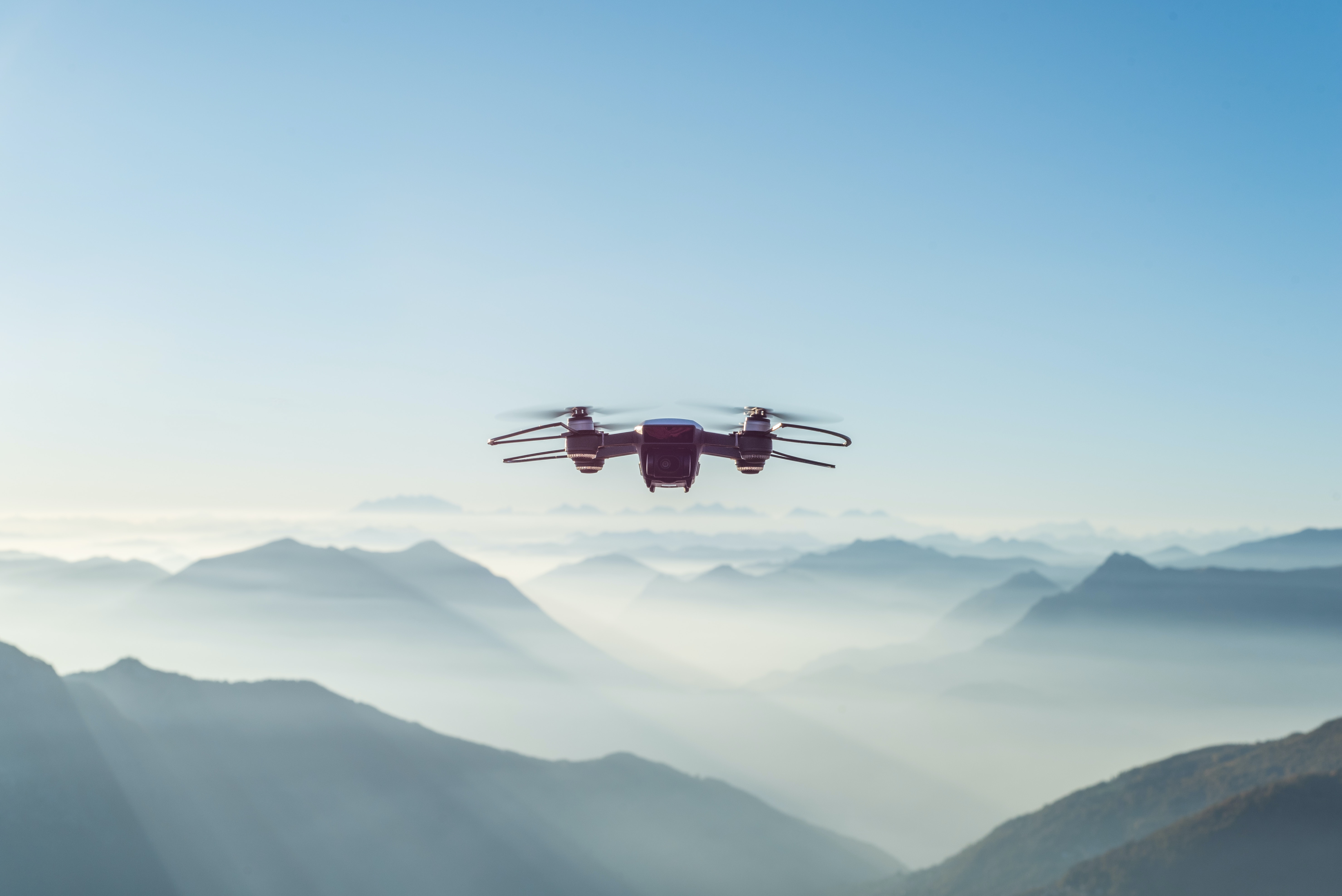The extraordinary performance of quantum sensors based on cold atoms will enhance our understanding of the world around us. While ground-based devices are currently in use, their deployment by Unstaffed Aerial Vehicles (UAV's) requires significant reductions in size, weight, and power. This work has realised the first step towards the deployment of cold atom-based sensors on UAV’s.
Views 1088
Reading time 3 min
published on Oct 13, 2023
Today, we use unstaffed aerial vehicles (UAVs) with a diverse array of sensors in a wide range of applications including aerial photography, precision agriculture, environmental monitoring (i.e. forest fire and river monitoring), and infrastructure inspections. For instance, magnetometers are used on UAVs in archeological applications as well as for mineral exploration.
Quantum sensors perform highly sensitive measurements of physical parameters, such as magnetic fields or gravity, utilising the quantum nature of matter. One of a number of advantages over existing sensors is that by utilising the fundamental properties of atoms, they can perform low drift measurements. This means their measurements can remain accurate over longer time scales than existing sensors. The extraordinary performance offered by quantum sensors has already been realised with ground-based sensors in real world applications including locating buried utility tunnels and performing long term monitoring of magma flows in a volcano. While ground-based quantum sensors are already beginning to be used and are beginning to enter the commercial market, significant improvements in robustness to motion, reductions in size, weight, and power are required for such devices to be deployable by UAVs.
To provide the first steps towards realising cold atom sensors on UAVs, researchers from the University of Birmingham and University of Strathclyde developed a compact device, called a Magneto-optical trap (MOT), a core common component of a large number of quantum sensors. A MOT uses light and magnetic fields to trap laser cooled rubidium atoms in clouds. In the case of this MOT they where roughly 2 mm in diameter and cloud consisted of roughly 21 million atoms in a very small package.
To test the compact MOT during the flight, we mounted it to a UAV along with two lithium polymer batteries. These batteries provided power to both the compact MOT system and the UAV, although the power consumption of the MOT system was negligible compared to the UAV. We set the system to generate atom clouds periodically while on the ground and left the system to run autonomously throughout the test flight. The system was then flown to a height of roughly 10 m, after which it hovered for 10 minutes before landing. During the test flight, MOT generated several cold atom clouds demonstrating the operation of a cold atom system on a UAV for the first time.
This compact MOT system represents the first step towards realising the high precision and low-drift measurements offered by cold atom-based sensors in a portable UAV package. Once developed, we expect that drone portable quantum sensors will enhance our ability to understand and monitor the world around us. They may be particularly useful to reach inaccessible or hazardous locations such as on the steep sides of volcanoes or in dense forests. They will also be beneficial when rapid redeployment of sensors is required as in cases of time-varying features for applications such as hydrological monitoring. Furthermore, future UAV portable systems could be used for the automated deployment and redeployment of quantum sensors to enable large area surveys, for example in archaeological applications, enabling the detection of buried cities or lost tombs, or for monitoring ground water levels over large areas.
Original Article:
Earl, L., Vovrosh, J., Wright, M., Roberts, D., Winch, J., Perea-Ortiz, M., Lamb, A., Hayati, F., Griffin, P., Metje, N., Bongs, K., & Holynski, M. (2022). Demonstration of a Compact Magneto-Optical Trap on an Unstaffed Aerial Vehicle. Atoms, 10(1). https://doi.org/10.3390/atoms10010032
 Maths, Physics & Chemistry
Maths, Physics & Chemistry



